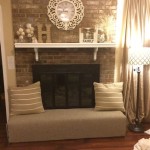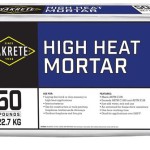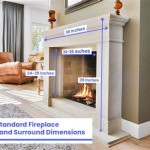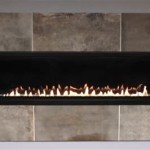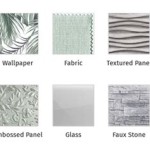Antique Fireplace Screens: A Focus on Small and Decorative Features
Antique fireplace screens, particularly those classified as "small," represent more than mere functional hearth accessories; they are tangible artifacts reflecting historical periods, artistic movements, and evolving domestic aesthetics. These screens, often measuring less than 36 inches in height and width, offer a concentrated dose of visual appeal and historical significance, making them desirable additions to both grand estates and smaller, contemporary living spaces. Examining the features, materials, and historical contexts of these smaller screens illuminates their unique value within the broader realm of antique furnishings.
The purpose of a fireplace screen, regardless of size, remained primarily to mitigate the harsh realities of an open hearth. These realities included excessive heat, flying embers, and downdrafts that could disrupt the airflow within a room. However, the "small" designation often implies that aesthetic considerations played a particularly prominent role in their design. Given their compact size, artisans frequently prioritized intricate detailing and decorative elements to maximize visual impact. This emphasis on craftsmanship and artistry is a key differentiator for small antique fireplace screens.
The Material Palette: A Reflection of Era and Affluence
The materials used in the construction of small antique fireplace screens varied widely, dictated by prevailing stylistic trends, the owner's financial standing, and the geographical location of manufacture. Common materials include:
- Wrought Iron: Favored for its durability and malleability, wrought iron allowed blacksmiths to create intricate scrollwork, floral motifs, and geometric patterns. Screens constructed of wrought iron often exhibit a rustic charm and are characteristic of earlier periods. These screens could be left in their natural dark finish or painted, often with black enamel, although hints of original gilding or decorative paint can sometimes be found beneath layers of restoration.
- Brass and Bronze: These metals, prized for their lustrous appearance and resistance to corrosion, were frequently employed in the fabrication of more elaborate and expensive screens. Brass screens often feature repoussé (hammered relief) designs, pierced fretwork, and engraved details. Bronze screens, while less common, offered a richer, deeper tone and were sometimes used for screens designed to mimic the appearance of more costly materials like gold.
- Wood: Wooden frames, often crafted from mahogany, walnut, or oak, provided a stable and decorative foundation for various screen elements. Wooden frames were frequently embellished with carved details, inlaid veneers, or applied ornaments. The wood itself could be stained, polished, or painted to complement the surrounding décor.
- Mesh and Fabric: Regardless of the frame material, a mesh panel was essential for containing sparks and embers. Brass mesh was a popular choice for its durability and aesthetic appeal. Fabric panels, typically made of wool, silk, or tapestry, were often incorporated for added decorative effect and could be easily changed to suit seasonal or stylistic preferences. Embroidered or needlepoint panels were particularly prized, adding a personal and artistic touch.
- Glass and Ceramics: Less common but noteworthy, some small fireplace screens incorporated glass or ceramic elements. Colored glass panels, often leaded or stained, introduced vibrant hues and patterns. Ceramic tiles, particularly those produced by renowned manufacturers like Minton or Wedgwood, added a touch of sophistication and artistry.
The combination of these materials often demonstrates the ingenuity of the artisans creating these screens, showcasing their ability to harmonize functionality with artistic expression.
Decorative Motifs: Decoding the Historical Narrative
The decorative motifs adorning small antique fireplace screens offer valuable insights into the prevailing artistic and cultural trends of their respective eras. Common themes and styles include:
- Georgian (1714-1830): Characterized by symmetry, restraint, and classical influences, Georgian screens often feature restrained scrollwork, geometric patterns, and depictions of pastoral scenes. Neoclassical motifs, such as urns, swags, and acanthus leaves, were also prevalent during this period.
- Victorian (1837-1901): The Victorian era witnessed a proliferation of styles, ranging from the ornate Rococo Revival to the more restrained Aesthetic Movement. Victorian screens often feature elaborate floral designs, Gothic arches, and depictions of animals and historical figures. The emphasis was on opulence and detail, reflecting the era's penchant for maximalism.
- Art Nouveau (1890-1910): Characterized by flowing lines, organic forms, and stylized natural motifs, Art Nouveau screens embraced asymmetry and visual dynamism. Common motifs included irises, water lilies, dragonflies, and female figures with flowing hair. The emphasis was on originality and artistic expression.
- Art Deco (1920-1939): Embracing geometric patterns, streamlined forms, and exotic influences, Art Deco screens reflected the era's fascination with modernity and technology. Common motifs included zigzags, chevrons, sunbursts, and stylized depictions of industrial subjects.
Analyzing these motifs allows for a more nuanced understanding of the screen's provenance and its place within the broader context of decorative arts history. The details carved into the wood, hammered into the metal, or woven into the fabric tell a story, preserving a snapshot of the aesthetic preferences of a particular time.
The Practicalities of Collecting and Preserving Small Antique Fireplace Screens
Collecting small antique fireplace screens presents both opportunities and challenges. Their compact size makes them easier to display and store compared to larger screens. However, their age and delicate construction require careful handling and preservation.
- Condition Assessment: A thorough inspection is essential before acquiring an antique screen. Look for signs of damage, such as cracks, dents, rust, or missing elements. Assess the stability of the frame and the integrity of the mesh or fabric panel. Consider whether any restoration work has been carried out and whether it was done professionally.
- Cleaning and Maintenance: Gentle cleaning is recommended to remove dust and surface dirt. Avoid using harsh chemicals or abrasive cleaners that could damage the screen's finish. For metal screens, use a soft cloth and a specialized metal polish. For wooden screens, use a damp cloth and a mild soap solution. Fabric panels may require professional cleaning.
- Display and Storage: When displaying an antique screen, choose a location away from direct sunlight and excessive humidity. Avoid placing heavy objects on the screen or subjecting it to undue stress. When storing a screen, wrap it in acid-free tissue paper and place it in a protective box or bag.
- Authenticity and Provenance: When possible, research the screen's history and provenance. Look for maker's marks, labels, or inscriptions that could provide clues about its origin and date of manufacture. Consult with experts in antique decorative arts to verify the screen's authenticity and value.
Investing in the preservation of these small screens ensures that they continue to serve as tangible links to the past, offering aesthetic pleasure and historical insight for generations to come. The value of an antique, often, is not simply its monetary worth but its ability to connect us to the craftsmanship and design principles of bygone eras.
The appeal of small antique fireplace screens lies not only in their practical function but also in their embodiment of artistry, history, and cultural expression. They represent a microcosm of decorative arts, offering a tangible connection to the past and a testament to the enduring power of craftsmanship.

Antique Fireplace Screens Extraordinarily Elegant Ember Enclosures

A Small Wrought Iron Firescreen Antique Fireplaces And Surrounds Thornhill Galleries

Pare Fireplace Screen In Period Broe 19 Th Of The Louis Xv Style En

Pare Fireplace Screen In Period Broe 19 Th Of The Louis Xv Style En

Antique Baroque Brass Fireplace Screen 11079c

Antiqued Brass Fireplace Screen Reviews Crate Barrel

Yes It S A Fire Screen Needlenthread Com

51 Decorative Fireplace Screens To Instantly Update Your

Deco Metal Fireplace Screen West Elm

Antique Fireplace Screens Extraordinarily Elegant Ember Enclosures
Related Posts

